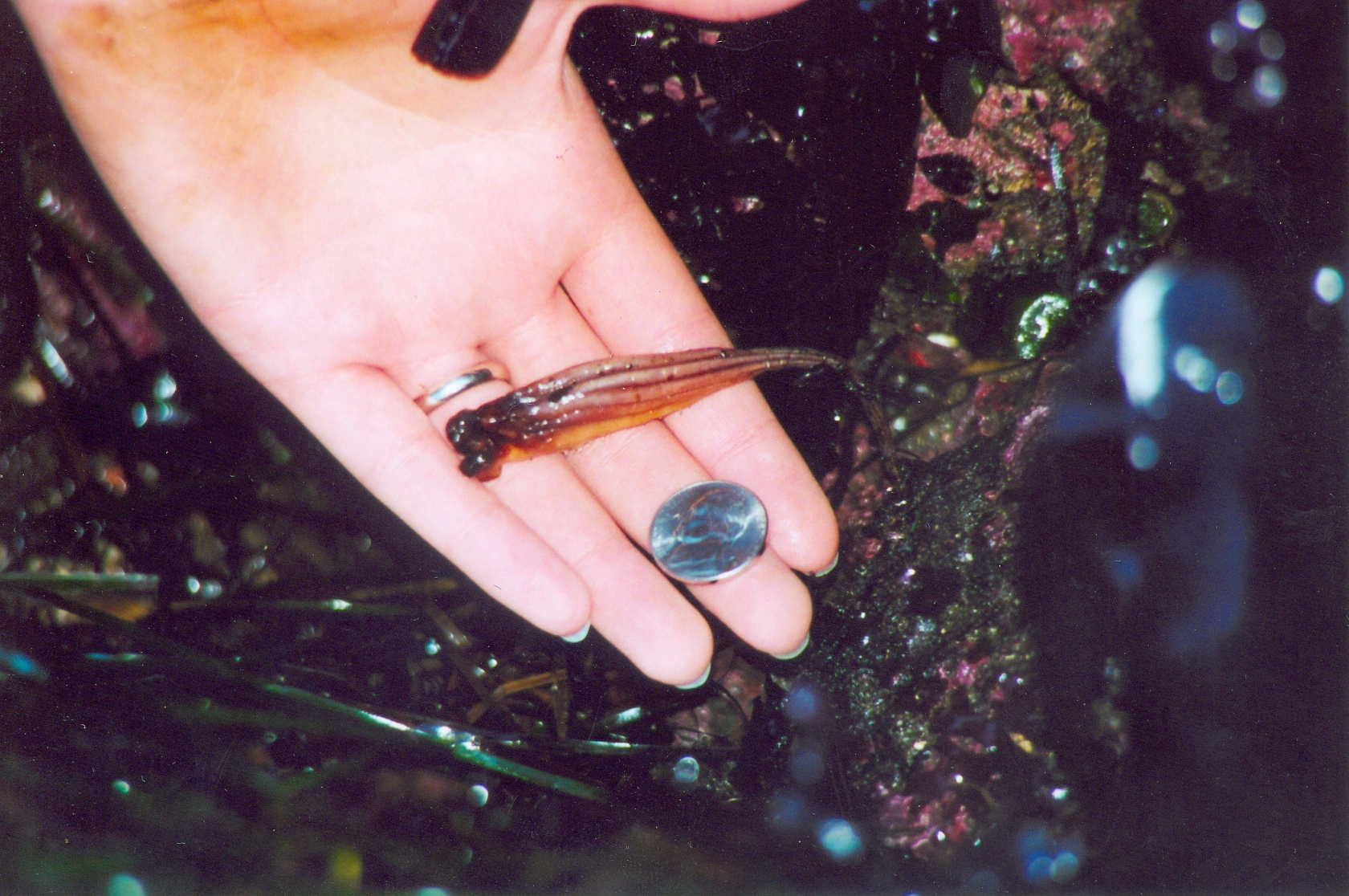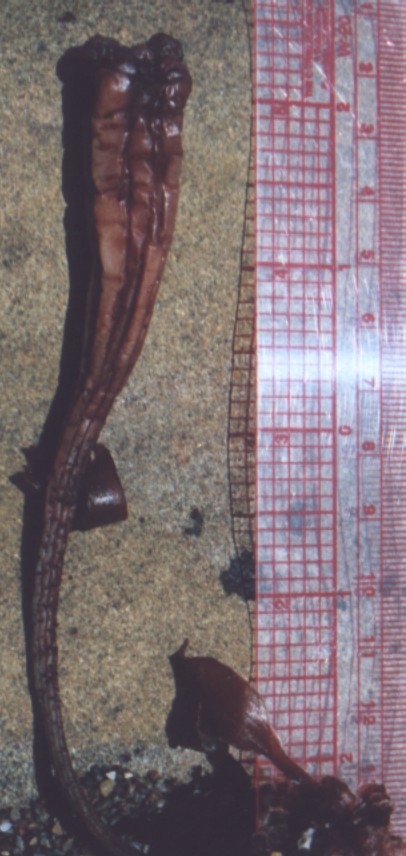Styela montereyensisStalked Tunicate, Monterey stalked tunicate, Long-stalked sea squirt |
|
 |
|
| Phylum Chordata
Subphylum Urochordata Class Asidiacea Order Pleurogona Suborder Stolidobranchia Family Styelidae |
|
| Styela montereyensis observed at Cape Flattery, Wa 11 cm in length | |
| Photo taken by Brandon White 7/08/02 | |
How to Distinguish from Similar Species: Can be easily confused with Styela clava. It can be distinguished by the facts that Styela clava has the following (a) tunic usually bearing conspicuous tubercles, (b) tunic often with irregular longitudinal wrinkles but never with regular ridges and grooves along entire body representing thick and thin regions of test, and (c) both siphons straight, the oral siphon not recurved toward base of stalk.
Geographical Range: Vancouver Island to Baja, California.
Depth Range: Low intertidal zone to about 30m
Habitat: Fairly Common, firmly attached to solid substrata in calm to very rough waters. In the Pacific Northwest it is mainly found in the outer Straits and open coast, but rarely in inland waters.
Biology/Natural
History: Although
they just look like slimy sacs, tunicates or sea squirts, are more
closely
related to humans than any other invertebrate group. This is because
larval
tunicates have several chordate structures - including a nerve chord
and
a notochord. These are later lost in most adult forms. Two openings are
found on the tunicate: the buccal siphon (water comes in) and the
atrial
siphon (water goes out). Sea squirts got their name because a gentle
squeeze
will cause water to shoot out of their atrial siphon! The sedentary
adult
forms can either be solitary or colonial. A cool fact about tunicates
is
that they have a long, tubular heart that contracts in two directions!
Breeding and larval settlement occur in the summer. Study of the
developing
eggs shows that the inner follicle of the oocyte provides the test
cells
that are enclosed with the ovum inside the chorion. Both eggs and sperm
are shed to the sea. In natural situations the larvae settle best on
surfaces
that have been underwater at least several months. In metamorphosing
larvae
the tail collapses, as is characteristic in members of the suborder
Stolidobranchia,
by contracting of the notochord itself, not (as in Aplousobranchia) by
contraction of the caudal epidermis This species may store
vanadium
(to about 36-40 ppm dry weight) in its tunic. On the open
coasts
of Washington and Vancouver Island this species often has the copepod Pygdelphys
aquilonaris in its branchial sac.
| Return to: | |||
| Main Page | Alphabetic Index | Systematic Index | Glossary |
References:
Dichotomous Keys:
Flora and Fairbanks, 1966
Kozloff, 1987, 1996
Smith and Carlton, 1975
General References:
Brown
and Rovetta, 1996
Brusca
and Brusca, 1978
Gotshall,
1994
Harbo,
1999
Hinton,
1987
Kozloff,
1993
Morris
et al., 1980
Niesen,
1994
Niesen,
1997
Ricketts
et al., 1985
Sept,
1999
Scientific Articles:
General Notes and Observations: Locations, abundances, unusual behaviors, etc.:
The name Styela means "pillar".

An individual from San Simeon, CA. Photo by Dave Cowles,
April
1997

This individual is under a rock at Cape Flattery. Photo by
Dave
Cowles, July 2005
Authors and Editors of Page:
Brian Catelli (2002): Created original page
Edited by Hans Helmstetler 11-2002